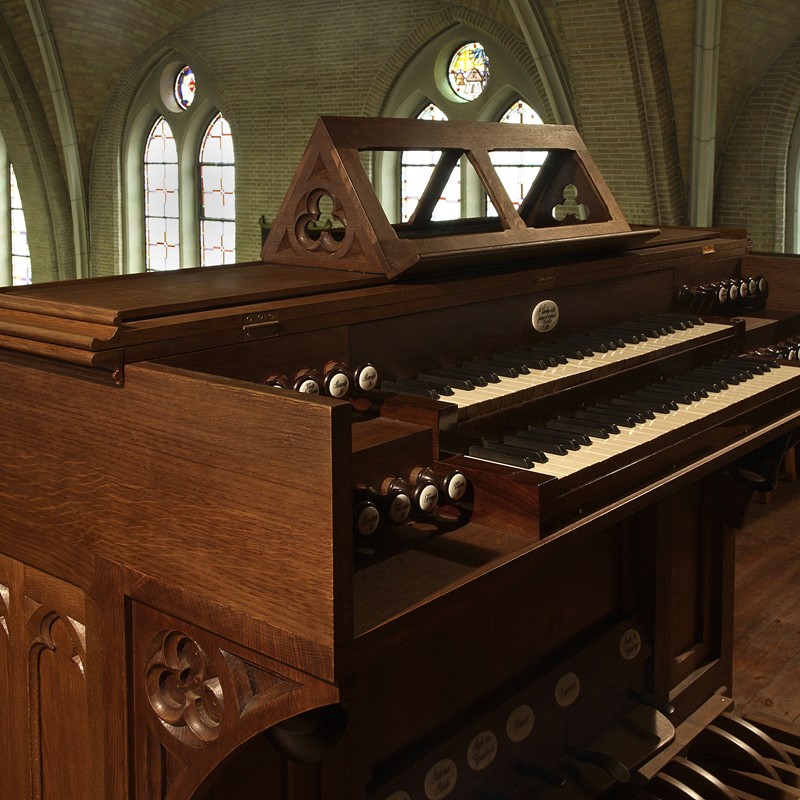Sint-Amandsberg (Ghent, B) | Saint Amand
Originally built in the workshops of Vereecken at Gijzegem, the organ was dedicated in 1881. Almost half a century later, in 1938, Jos Loncke from Eesen installed a new detached console and a Barker machine, making some modifications to the specification as well. Stevens from Duffel made further reforms in 1979.
The restoration from 2004 reversed all alterations and went back to the original concept described in detail in old documents and archives. The organ in Heusden served as model for the reconstitution of the console and of some other missing ranks.
Vereecken’s output stands out for its fine craftsmanship, frequently regarded as extremely robust. The thickness of materials – case walls, pipes of wood and metal – render them particularly sturdy. However, such construction procedures made his actions to be considerably heavy. As the restoration progressed we decided to add a new Barker machine built after models of Salomon Van Bever.
Vereecken’s tonal design is voluptuous and mellow, based on abundant 8’ and 4’ tone on the manuals and a strong fundamental in the Pedal.
Stop list
Grand-Orgue
C – g '''
Bourdon 16'
Montre 8'
Viole de Gambe 8'
Flûte harmonique 8'
Bourdon 8'
Flûte 4'
Prestant 4'
Doublette 2'
Fourniture III
Trompette 8'
Clairon 4'
Récit / Grand-Orgue
Tremblant
Récit
C – g '''
Flûte harmonique 8'
Salicional 8'
Bourdon 8'
Voix céleste c° 8'
Flûte harmonique 4'
Dulciana 4'
Basson-Hautbois 8'
Voix humaine 8'
Pédale
C – f '
Flûte ouverte 16'
Flûte ouverte 8'
Bombarde 16'
Trompette 8'
Grand-Orgue / Pédale
Récit / Pédale
Récit / Grand-Orgue
Tremblant




